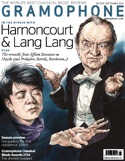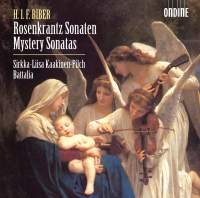Texte paru dans: / Appeared in:
*

GRAMOPHONE (09/2014)
Pour s'abonner /
Subscription information
Ondine
ODE12432D

Code-barres / Barcode : 0761195124321 (ID434)
Reviewer: Caroline Gill
Heinrich Ignaz Franz Biber’s so-called Mystery Sonatas are the best-known works of a composer superficially remembered for the extreme virtuosity of his writing. To that end, they are often paired with the works of his contemporary (and also) Austrian exponent of the virtuoso-improvisatory stylus fantasticus, Johann Schmelzer, but the spiritual depth of this cornucopia of musical radicalism was not equalled until much later, in the solo violin music of JS Bach.
This collection of pieces is unique in the violin repertoire due to its use of scordatura, the practice of retuning the strings on a violin (and sometimes, even, crossing them over) to produce different effects. It was relatively common practice in the Baroque period but never examined so exhaustively as in the Mystery Sonatas. Each one, bar the ‘Resurrection’ Sonata and the closing Passacaglia, uses it in some form, and there are points at which the music can become almost Bachian in the mystical complexity that arises from it. The effects that result from this practice are alternately painful and beautiful, and the technique of the violinist needs to be perfect in order to do the consequential contrast any justice. If it is not, its technical complexities force any failings of the player to compensate with unsubtle effects; if it is, the virtuosity becomes almost irrelevant and the music dons the sort of veneer of spirituality that it does in Sirkka-Liisa Kaakinen-Pilch’s extraordinary performance.
The most
daring scordatura is in ‘Surrexit Christus hodie’, in which the unexpected sound
of playing in octaves and tenths is given a particularly powerful effect by
Kaakinen-Pilch’s immaculate tuning. She also manages a wondrous balance of the
folk music with which Biber would have been most familiar with the graceful,
intellectual pieces they more readily are. This combination pays all the
necessary dues to a unique set of pieces that is full of symbolism, musical
extremism and the meditation on a mystery as complex as the 15 mysteries of the
Rosary.
Fermer la fenêtre/Close window
Cliquez l'un ou l'autre
bouton pour découvrir bien d'autres critiques de CD
Click either button for many other reviews


